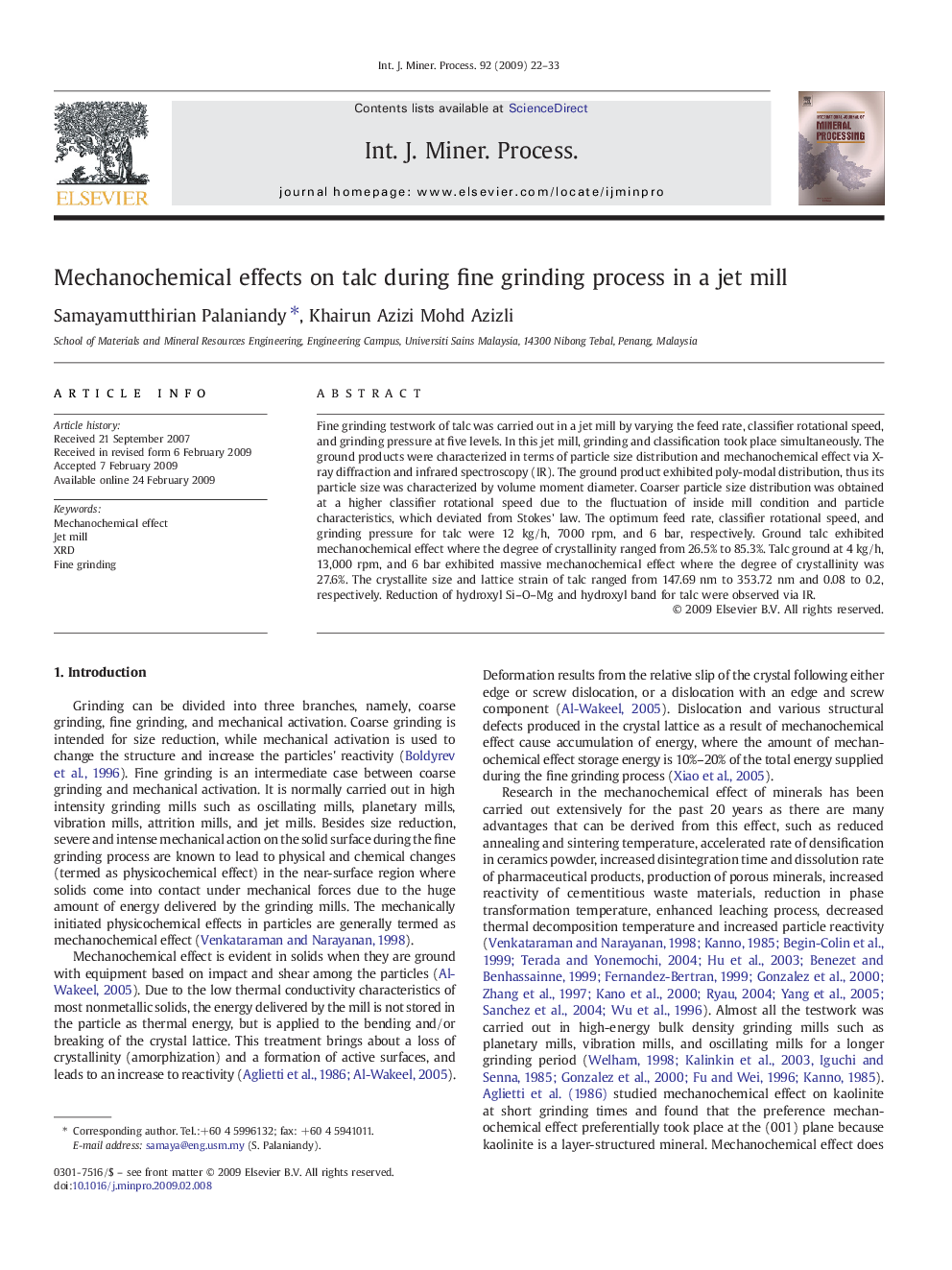| Article ID | Journal | Published Year | Pages | File Type |
|---|---|---|---|---|
| 214544 | International Journal of Mineral Processing | 2009 | 12 Pages |
Fine grinding testwork of talc was carried out in a jet mill by varying the feed rate, classifier rotational speed, and grinding pressure at five levels. In this jet mill, grinding and classification took place simultaneously. The ground products were characterized in terms of particle size distribution and mechanochemical effect via X-ray diffraction and infrared spectroscopy (IR). The ground product exhibited poly-modal distribution, thus its particle size was characterized by volume moment diameter. Coarser particle size distribution was obtained at a higher classifier rotational speed due to the fluctuation of inside mill condition and particle characteristics, which deviated from Stokes' law. The optimum feed rate, classifier rotational speed, and grinding pressure for talc were 12 kg/h, 7000 rpm, and 6 bar, respectively. Ground talc exhibited mechanochemical effect where the degree of crystallinity ranged from 26.5% to 85.3%. Talc ground at 4 kg/h, 13,000 rpm, and 6 bar exhibited massive mechanochemical effect where the degree of crystallinity was 27.6%. The crystallite size and lattice strain of talc ranged from 147.69 nm to 353.72 nm and 0.08 to 0.2, respectively. Reduction of hydroxyl Si–O–Mg and hydroxyl band for talc were observed via IR.
